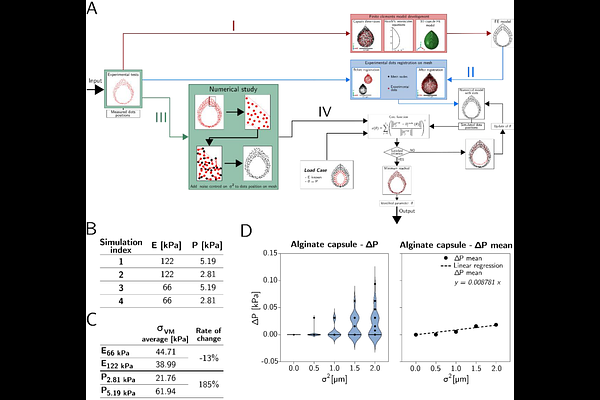Non-destructive assessment of multi-material micro-tissue mechanics reveals the critical role of rigidity gradients in tumour growth and pressure

Non-destructive assessment of multi-material micro-tissue mechanics reveals the critical role of rigidity gradients in tumour growth and pressure
ALA, A.; DOUILLET, C.; FERRAND, A.; VELAY, V.; SEGONDS, S.; RECHER, G.; BUGARIN, F.
AbstractProbing stiffness anisotropies in three-dimensional materials non-destructively is a major challenge in disciplines as diverse as aeronautics and medicine. While the former typically relies on various mechanical tests - such as tensile, compression, bending, and shear - performed on sample parts, the latter often employs acoustic techniques or wave propagation through matter. The choice of techniques will depends on the size of the sample of interest and the desired resolution. In our case, to probe the mechanical properties of sub-millimetre micro-tissues, it is necessary to use methods with high resolution and as furtive as possible. We present a method based, 1/ on imaging the displacement of microbeads within a hydrogel resulting from the growth of a three-dimensional micro-tissue and, 2/ on finite element modelling of the deformations underlying bead displacements. This approach allows us to determine the elastic properties of the hydrogel and, in particular, to show that beyond a certain thickness, incomplete cross-linking of the hydrogel results in a stiffness gradient. We show that when the micro-tissue contacts with an immediately rigid alginate wall, the pressure exerted over time increases very rapidly, whereas when the micro-tissue encounters a substrate with a stiffness gradient, the pressure increase is more gradual. Uncovering this could provide a better understanding of the role of tumour microenvironment stiffness in metastatic escape processes.